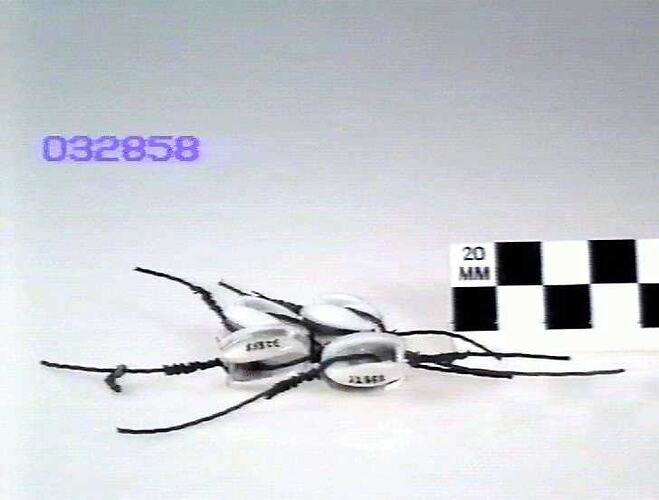Summary
Four insulators used to support aerial wires, known as 'egg' insulators. Australian-made, circa 1925. Two lengths of aerial wire are attached to either end, 'insulated' from each other.
An important feature of the egg insulator is that the arrangement puts the ceramic under compression with a load; ceramic is not very resistant to tension but is under compression.
Used throughout early days of radio reception, for example for crystal set reception in 1920s.
Physical Description
Each insulator is attached to a small length of aerial wire. Each insulator has an egg shape with grooves and two transverse holes mutually perpendicular to each other at each end.
More Information
-
Collecting Areas
-
Acquisition Information
Purchase
-
Place & Date Made
-
Inscriptions
On each egg but very difficult to see because of the glaze and the wire obscuring it: something like "2/1812"
-
Classification
-
Category
-
Discipline
-
Type of item
-
Part Dimensions
38 mm (Length), 27 mm (Outside Diameter)
Size of each insulator excluding attached wires.
-
Keywords
